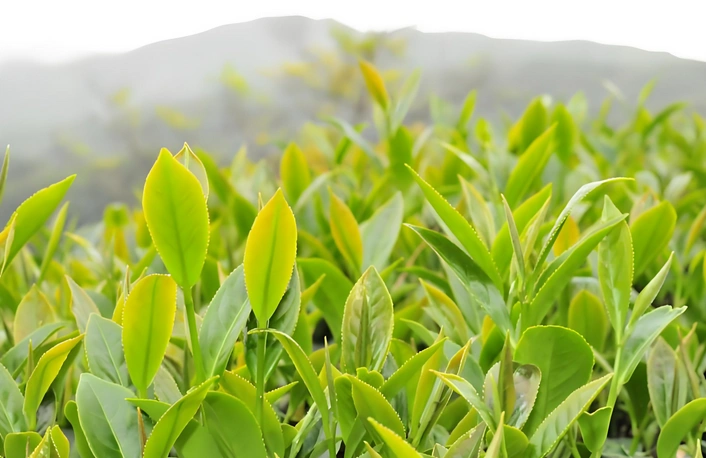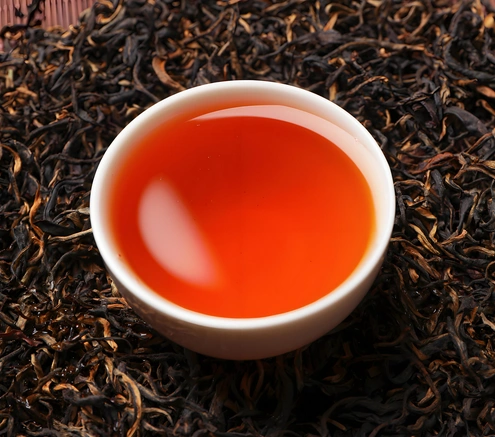Loose leaf black tea is more than just a morning pick-me-up—it’s a sensorial voyage that awakens your palate, soothes your spirit, and nourishes your body. Imagine the deep mahogany hue swirling in your cup, the heady aroma of malt and cocoa weaving through the steam, and that first velvety sip spreading warmth from your lips to your chest. Unlike fleeting tea bags, loose leaf black tea invites you to slow down, appreciate each whole unfurled leaf, and discover nuanced layers of flavor.
In this guide, we’ll explore everything you need to know to transform your daily cup into a ritual of delight: from the origins of loose leaf black tea, to its health-boosting properties, brewing mastery, and creative ways to weave it into your modern routine.
What Is Loose Leaf Black Tea?
Loose leaf black tea is fully oxidized Camellia sinensis leaves, creating a robust, full-bodied brew with rich color and lasting aroma. The oxidation process darkens the leaves and develops sugars and tannins that yield notes of caramel, dark fruit, and toasted malt. Unlike crushed tea bag dust, whole leaves retain essential oils and complex polyphenols that steep out gradually—granting multiple infusions with evolving character.

Origins & Key Varietals
Black tea’s story spans continents, but two Chinese regions shine for their terroir-driven gems:
Yunnan Black Tea
From China’s mist-laden Yunnan hills comes Yunnan black tea, known for its thick, syrupy mouthfeel and whisper of wild honey. The sun-dappled leaves are often flecked with golden tips—markers of prized bud plucking—and brew into a deep copper liquor with smoky, malted nuances.
Fujian Black Tea
On rugged Fujian cliffs, leaves are caressed by ocean breezes and mineral-rich soil. Fujian black tea—including Lapsang Souchong and Jin Jun Mei—delivers a smooth, refined sweetness layered with pinewood smoke or orchard fruit. Each sip evokes windswept terraces and secret mountain mist.
Other Notable Blacks
- Assam (India): Bold, brisk, and malty—breakfast powerhouses.
- Ceylon (Sri Lanka): Bright, citrusy uplift that shines over ice.
Health Benefits of Loose Leaf Black Tea
Beyond blissful flavor, loose leaf black tea brims with wellness perks:
Antioxidants & Heart Health
Black tea is rich in theaflavins and thearubigins—polyphenols that scavenge free radicals, reduce inflammation, and support healthy blood vessels. Regular sipping has been linked to balanced cholesterol levels and improved arterial function, offering a warm companion on your journey to a stronger heart.
Gentle Caffeine & Mental Clarity
With about half the caffeine of coffee, loose leaf black tea provides a smooth, sustained lift. Combined with L-theanine, it fosters calm focus—an ideal aid for tackling morning emails or powering through an afternoon slump without the jitters or crash.
Digestive Support & Metabolism
The bittersweet tannins of black tea can soothe the digestive tract, relieve minor discomfort after meals, and gently stimulate metabolism. A cup after dinner can aid digestion, while a morning brew kick-starts your calorie-burning furnace.
How to Choose High-Quality Loose Leaf Black Tea
Scouting for top-tier leaves transforms every cup into a masterpiece:
- Appearance: Whole, unbroken leaves—preferably with golden tips—signal careful plucking and processing.
- Aroma: Dry leaves should breathe a strong, inviting scent—malt, cocoa, or orchards rather than musty cardboard.
- Source: Seek single-origin or estate teas, and consider organic certification to avoid pesticide residues.
- Storage: Preserve freshness in airtight, light-resistant containers, away from heat and moisture.
Brewing Loose Leaf Black Tea for Maximum Flavor
Master the art of infusion to coax every note from the leaf:
Water Temperature & Steep Times
Heat water to 200–212°F (93–100°C). Use 1 teaspoon (2–3 g) of leaves per 8 oz water, steeping:
- First Infusion: 3–4 minutes for a balanced brew.
- Second Brew: 4–5 minutes yields deeper notes.
Unlike green or oolong, black tea rewards a full boil and robust steep.
Gongfu-Style vs. Western-Style
- Gongfu-Style: Use a small gaiwan or teapot, high leaf-to-water ratio, and multiple short steeps (30 s to 1 min). This intensifies aroma and reveals evolving layers.
- Western-Style: A teapot or infuser with one longer steep offers simplicity and a consistent cup—perfect for busy mornings.
Multiple Infusions & Re-steeping
Many black teas, especially those with golden tips like Yunnan, can be re-steeped up to three times. Each infusion mellows astringency and highlights different flavor facets—from bright malt to late honeyed sweetness.
🔗 For more tea brewing methods, check out the YouTube video explaining the brewing methods.

Incorporating Loose Leaf Black Tea into Your Day
Loose leaf black tea isn’t just for tea lovers—it’s a versatile companion:
- Morning Energy Ritual: Begin with a robust Assam or Yunnan to awaken senses and fuel focus.
- Midday Reset: A lighter Ceylon or Fujian brew refreshes without disrupting sleep later.
- After-Meal Digestif: A soothing cup aids digestion and cleanses the palate, especially after rich foods.
- Iced Delights: Cold-brewed black tea yields soft tannins and natural sweetness—ideal for hot afternoons.
Pair black tea with pastries, sharp cheeses, or dark chocolate to create surprising flavor dialogues.
FAQs About Loose Leaf Black Tea
How many grams per cup?
1 tsp (2–3 g) per 8 oz water provides balanced strength.
Why does flavor change with each steep?
Whole leaves unfurl gradually, releasing new compounds over multiple infusions.
Can I drink it daily?
Yes—moderate consumption (3–5 cups/day) can be part of a healthy routine.
Conclusion: Embrace Loose Leaf Black Tea
From dawn’s first pour to twilight’s final sip, loose leaf black tea offers a journey of flavor, wellness, and mindfulness. Whether your heart sings for sun-dappled Yunnan hills or misty Fujian cliffs, each whole leaf celebrates place, craftsmanship, and tradition. So steep deeply, inhale that rich aroma, and let every velvety sip nourish your body and uplift your spirit.



